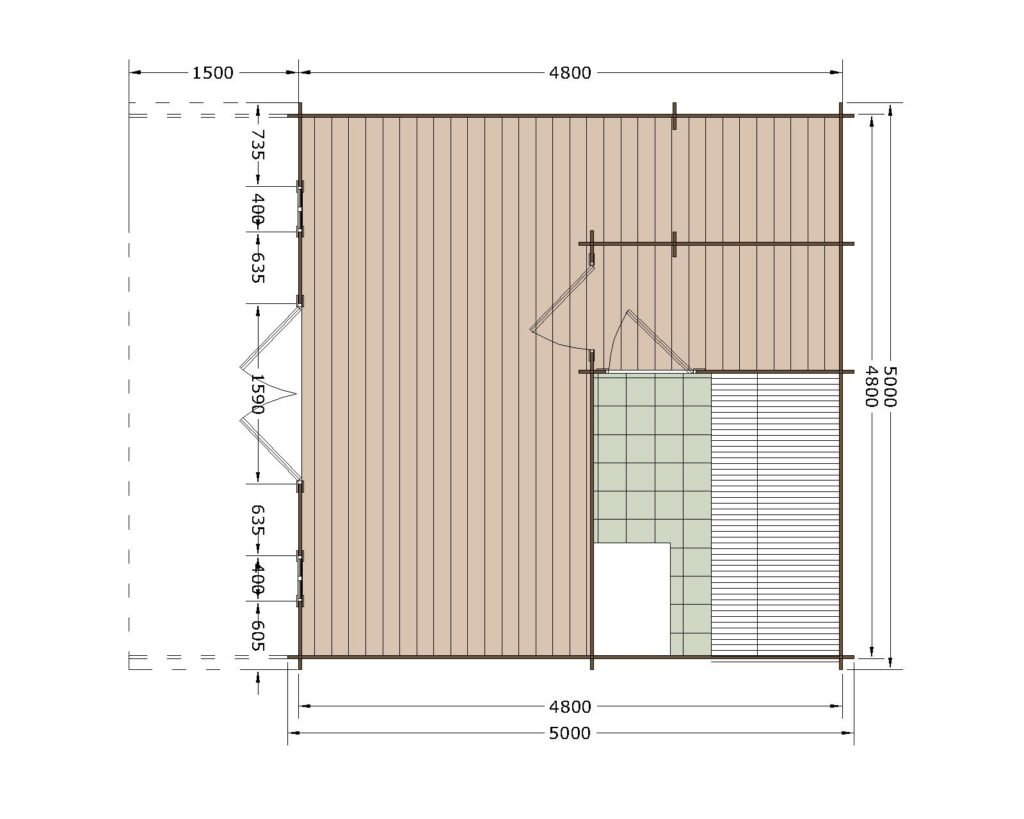
How to Soundproof Your Log House
Log homes may conjure images of rustic cabins in the woods or countryside. But these homes offer more than aesthetic beauty alone.
Many modern houses utilize drywall walls that do not effectively block noise; by contrast, solid log walls naturally reduce outside noise without additional materials being necessary.
Insulation
As you plan your log home design, it is essential that you take sound into consideration to ensure a cozy living experience.
Insulation is key to minimizing soundwave transmission within your log cabin, and selecting an effective type and level can significantly decrease noise transfer between different areas of your home. This is particularly important if your cabin includes areas that share walls; such as when your bedroom shares one wall with either the great room or home office. Proper soundproofing measures are needed in such cases to create an atmosphere conducive to restful sleeping conditions and peaceful relaxation.
For optimal soundproofing between walls, high-density insulation like fiberglass or cellulose should be utilized. When installing this type of material, air gaps and cracks must be sealed prior to application for maximum effectiveness. Incorporating additional soundproofing measures like acoustic foam or wall coverings could also prove effective in providing additional soundproofing measures.
Thickness of logs will certainly have an effect on noise transmission between rooms; however, they cannot prevent noise entering and reflecting off surfaces in your cabin if too much comes through the exterior walls. Therefore, insulation must also be considered when designing your log cabin home.
Insulating your log cabin not only provides greater comfort and energy efficiency, but can also increase its value on the real estate market. Potential buyers will appreciate your privacy-enhancing insulation measures as well as reduced energy consumption costs and improved acoustic qualities of your log cabin.
Insulating your log cabin correctly will not only add aesthetic appeal, but it will also ensure an environment conducive to relaxation and peace for years. By following the tips above, you can enjoy the serenity and solitude of your own cozy retreat for years.
At Premium Log House, we specialize in custom and residential log homes as well as timber frame buildings. Reach out today for more information or speak with one of our specialists about finding an ideal solution!
Door and Window Seals
Log and timber homes present unique design opportunities. Their natural beauty draws in guests while creating an inviting and cozy ambience. However, it is essential that homeowners fully comprehend the challenges inherent to living in log cabins in order to keep their space comfortable and efficient.
Logs provide natural insulation, while gaps between them allow in wind, cold air and moisture – increasing heating costs and decreasing efficiency in your home. Specialized sealants like Energy Seal and Perma-Chink fill these gaps to improve comfort levels, save money on energy bills and safeguard investments.
Sealants are applied using a caulk gun to all vertical and horizontal crevices between log courses, around window/door frames and roof systems using special caulk formulations that bond to wood as it shrinks and grows while having special ingredients to prevent mold/fungus growth.
Weather stripping, also known as vinyl weatherproofing strips, should be installed around moveable doors and windows to add an extra barrier against drafts and fill any gaps that exist between these moving parts of a log home. Many homeowners overlook this step but its presence should never be disregarded when building or remodeling log homes.
Specialized sealants can be customized to match the stain color for a seamless appearance or applied as wide bands to serve as dramatic architectural counterpoint. Chinking is often chosen by those who appreciate traditional log homes’ historic look; you can add color contrast through this technique that either complements or contrasts its stains.
Before applying sealants or other products to your log home, allow it to sit for several months to allow expansion and contraction between logs, creating an accurate color match and giving better color control. Make sure that you carefully follow instructions regarding your chosen product as improper application can have disastrous results.
Acoustic Panels
Log cabins present unique challenges when it comes to acoustic design. Their dense construction often results in excessive echo and reverberation that makes communicating or relaxing difficult; however, addressing soundproofing and absorption in their design process can help homeowners create more pleasant interior environments.
As well as sealing all gaps and cracks properly and installing high-performance insulation to reduce transmission between walls, it is also crucial to incorporate acoustic panels into your structure for noise absorption or isolation depending on its design requirements. Acoustic panels offer another important way of controlling noise pollution in buildings.
Cork wall coverings offer an effective and aesthetic way to address acoustics problems in log homes, while providing thermal and acoustic insulation benefits as well. Installing ceiling-mounted acoustic panels may also help block noise transmission between rooms.
These suspended panels provide sound absorption by absorbing soundwaves bouncing off hard surfaces like ceilings. Furthermore, their design adds visual interest to spaces with low ceilings by fitting right in with the rest of the ceiling’s design.
Acoustic panels can also be installed in commercial offices to increase productivity and provide a more enjoyable work environment, providing an array of colors and configurations to match any office design scheme.
Additionally, including movable screening solutions in your log cabin or timber frame home can create dedicated areas for conversations and video conferencing as well as create a more relaxing atmosphere for guests and family members alike.
Though these energy and noise-saving solutions add to the cost of your home, they’re essential in creating an atmosphere that is both relaxing and healthy. Incorporating such features during construction will reduce noise levels while simultaneously decreasing privacy issues while cutting energy consumption – saving money over time. Speak to a log cabin builder or timber frame company today about how these techniques can increase its acoustic, energy and sustainability performance!